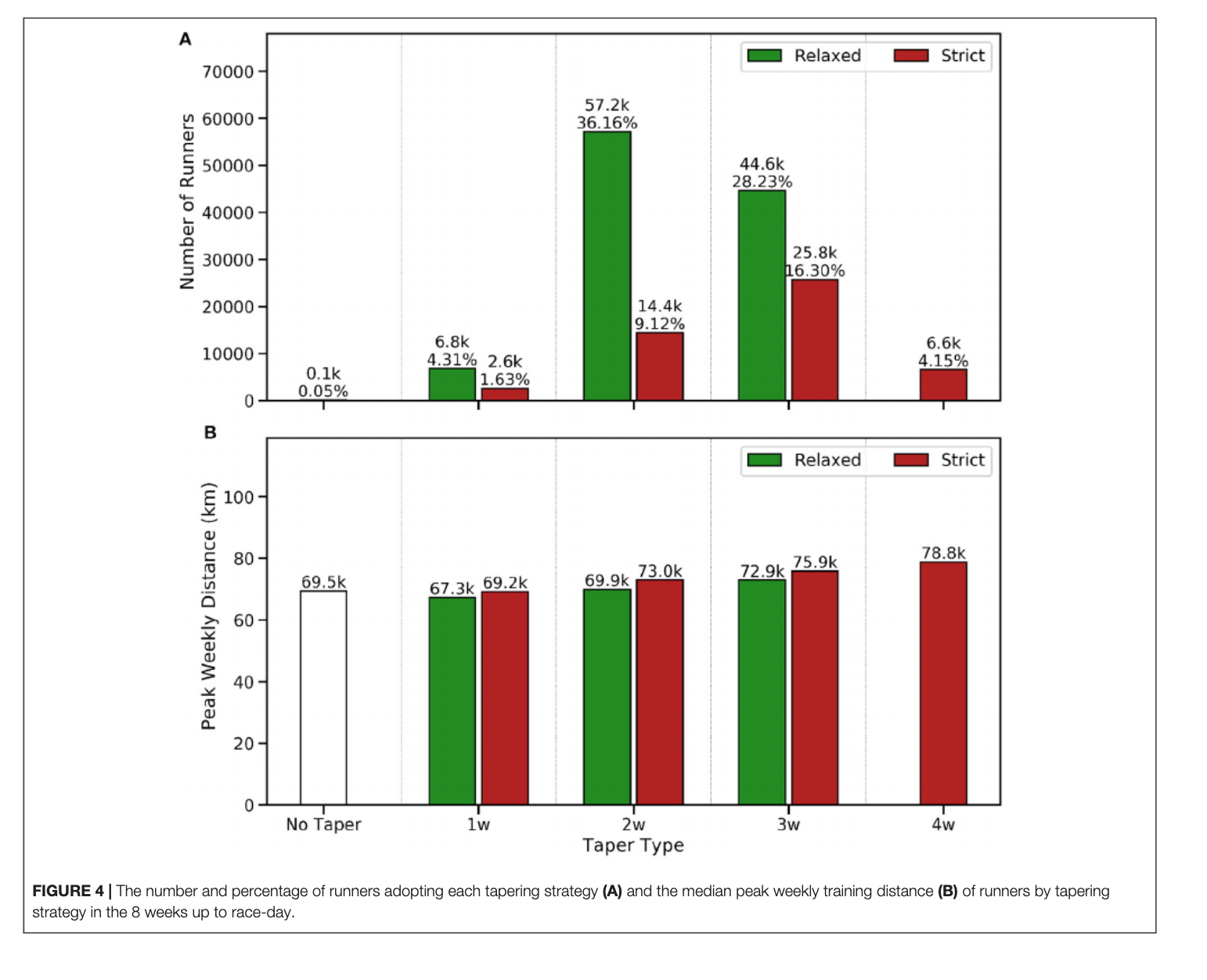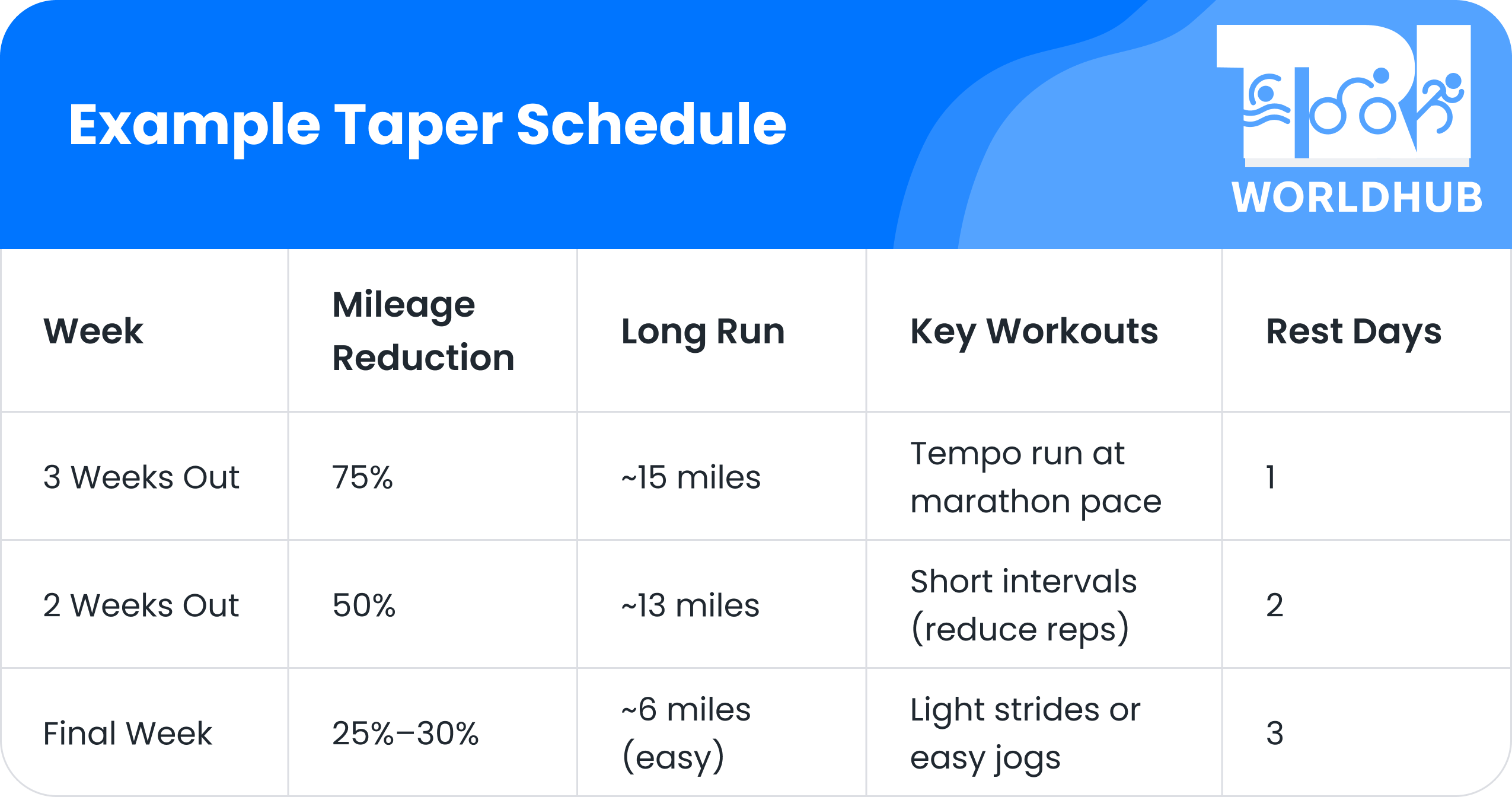Race day is almost here — are you ready to crush it? The final weeks before a marathon or half-marathon race are all about smart tapering. You are reducing mileage to recharge your body without losing fitness. I didn’t quite nail my taper in my recent race, but somehow I’ve managed to reach my new half-marathon PR. That was quite a race!
Nail your taper, and you’ll hit the start line fresh, strong, and ready for PR. Miss the mark, and you risk fatigue or burnout. This is something that happens more often than you can imagine. Check out this marathon race recap to learn more about how the race can go and what to expect.
Here’s your ultimate guide to tapering like a pro and arriving on race day at your absolute best.
Benefits of the Marathon Taper
Tapering before a marathon offers several key benefits that can significantly enhance race-day performance and overall experience.
This phase typically lasts three weeks, sometimes two weeks. 2-3 weeks. The goal of a marathon taper is to systematically reduce training volume while maintaining some intensity. Here are the main benefits of a marathon taper:
Muscle repair and glycogen replenishment
Months of hard training leave muscles with microscopic damage and depleted glycogen stores (your body’s primary fuel source for endurance). Tapering gives your muscles time to fully repair while supercompensating glycogen levels, so that you start the marathon with maximized energy reserves. Without this recovery phase, you risk hitting the wall earlier due to incomplete restoration.
Reduced inflammation
Increased running mileage causes low-grade inflammation in muscles, tendons, and joints. The reduced mileage during tapering alleviates joint inflammation and other stress-related issues. This means you’ll feel lighter, smoother, and more efficient on race day.
Peak race-day readiness
This study on how tapers improve marathon performance for recreational runners shows that tapering days before the race can improve endurance performance by 1-5%, potentially saving several minutes on marathon finish times.
This happens because:
- Fatigue drops faster than fitness, leading to a “supercompensation” effect.
- Hormonal balance improves (higher testosterone, lower cortisol), enhancing recovery.
- Nervous system efficiency increases, optimizing muscle recruitment.

Increased aerobic capacity
Though mileage decreases, maintaining some intensity (like short intervals or tempo runs) keeps your VO₂ max and lactate threshold sharp. Increased aerobic capacity means your body becomes better at using oxygen and clearing lactate, helping you sustain goal pace longer on race day.
And it’s the same principle behind the Norwegian training method, where athletes use frequent lactate testing to fine-tune intensity and get the most out of every workout without overtraining.
Injury prevention
Overtraining syndrome and overuse injuries (like stress fractures or tendonitis) often strike in the final weeks due to accumulated fatigue. Tapering reduces mechanical stress, giving nagging aches time to heal. It also strengthens the immune system, lowering the risk of catching a cold or flu before the race.
Overall, the taper period doesn’t mean being lazy. It’s the final, critical phase of training that transforms months of hard work into race-day success. Balancing recovery with maintained fitness allows you to arrive at the start line physically fresh, mentally sharp, and ready to unleash your best performance.
How to Create a Marathon Taper Plan
First, determine how long you’ll taper. So many runners I know taper for 2-3 weeks before the marathon. But the length of the taper depends on the runner. For example, if you’re new, you may want to taper for 3-4 weeks, while experienced runners may opt for 1-2 weeks.
Once you’ve decided on the taper, gradually reduce the training volume. If you’re tapering for 3 weeks, reduce mileage to about 75% of your peak week. For example, if your peak week was 40 miles, aim for 30 miles this week.
In the weeks leading up to, cut mileage further to 50% of your peak. Focus on shorter runs and reduce the length of your long run to 13-14 miles.
Reduce mileage to 25-30% of your peak week. Avoid high-intensity workouts like hill sprints or interval training and prioritize easy runs instead.
To maintain training intensity, incorporate shorter tempo runs at marathon pace (e.g., reduce 30-minute tempos to 20 minutes) and scaled-down speed workouts (e.g., fewer repetitions). This helps preserve fitness and prevent lethargy while reducing overall fatigue.
Gradually reduce training load, including cross-training activities like cycling or swimming during the taper. Stop lower-body strength training and spinning by the second week of tapering.
The most important thing at this stage of the marathon training cycle is to prioritize recovery. Focus on sleep, hydration, and marathon nutrition to allow your body to repair muscle tissue and replenish glycogen stores.
Add an extra rest day per week during the taper. You can use this time to visualize race day, calm pre-event nerves and build confidence in your training. Trust me, reducing mileage doesn’t mean losing fitness.
Marathon Taper Workouts
Marathon taper workouts focus on practicing marathon goal pace and reducing overall training volume while preserving intensity. Below are examples of effective taper workouts:
Week 3 before the race
- 6-mile marathon pace tempo: run at your marathon goal pace for 6 miles, with a 1-2 mile easy jog for both warm-up and cool-down.
- Taper cutdown: after warming up, run 4 miles at marathon pace, followed by 4 miles as fast as possible without stopping. Cool down with 1-2 easy miles.
- Speedwork: if accustomed to speed sessions, include intervals like 5x800m at race pace with jogging recoveries. Scale down the number of repetitions compared to peak training weeks.
Week 2 before the race
- 2×3-mile marathon pace tempo: perform two sets of 3 miles at marathon pace with a short recovery jog in between. Include warm-up and cool-down jogs.
- Shortened long run: reduce your long run to about 13-14 miles at an easy pace or include marathon pace segments toward the end.
- Intervals: include lighter interval workouts such as 3×1-mile repeats at race pace with jogging recoveries.
Example Taper Schedule

Race week
- 3-mile marathon pace tempo: Run 3 miles at marathon goal pace, accompanied by warm-up and cool-down jogs.
- Strides: perform short strides (e.g., 3×20 seconds) at race pace during a relaxed 4-5 mile run three days before the race.
- Easy runs: include short runs of 2-4 miles with minimal intensity. For example, run 2 miles easily the day before the race, optionally incorporating a couple of brief race-pace efforts.
Race Week Strategy
Your marathon race week strategy will define where you will run your marathon at your peak performance or hit the wall halfway. To ensure a smooth marathon experience, check out these key elements to focus on during the final week leading up to race day:
1. Training
- When creating your marathon pacing strategy, make sure to reduce weekly mileage significantly, focusing on short, easy runs. Include one light tempo workout about 4-5 days before the marathon to practice marathon pace without overexertion.
- Make at least one full rest day two days before the race. Light cross-training activities like biking or elliptical can be done earlier in the week but should be avoided closer to race day.
- Before the race morning, run a short 3-5 mile easy-paced run with a few strides to loosen up. Avoid skipping this run completely, as light activity helps keep your legs fresh.
2. Nutrition
- Gradually increase carbohydrate intake during the final 2-3 days before the race to maximize glycogen stores. Focus on complex carbs like pasta, rice, potatoes, and oats.
- Stick to foods you’ve eaten during training to prevent digestive issues.
- Don’t forget about protein; it’s essential for muscle repair and recovery after high-mileage training. Aim for 75-100 grams of protein per day. Include lean meats, eggs, dairy, beans, soy products, and nuts in your diet.
- Boost your immune system with vitamin C-rich foods like kiwis, oranges, strawberries, broccoli, and bell peppers.
Here is everything you should know about triathlon nutrition during race.
3. Hydration
- Drink water consistently throughout the day to be well hydrated leading up to race day. Hydration supports muscle function and reduces fatigue.
- On race day morning, drink 400-600ml of water or an electrolyte drink 2-3 hours before the start to make sure you’re hydrated but not overloaded.
- Include electrolyte-rich drinks or foods (like bananas or sports drinks) during taper week to maintain fluid balance and prevent cramping during the race.
4. Sleep
- Aim for 8-10 hours of sleep each night during race week, especially two nights before the marathon, as this is the most critical for recovery.
- If pre-race nerves interfere with sleep or you are dealing with post-workout insomnia, try relaxation methods like breathing exercises or light reading before bed.
5. Mental preparation
- Picture yourself running strong and crossing the finish line. This can boost confidence and reduce anxiety.
- Avoid overthinking or worrying about the race. Distract yourself with light activities or gratitude practices to keep a positive mindset.
6. Race day logistics
- Lay out your race-day gear (shoes, clothes, bib, nutrition) the night before to avoid last-minute stress. Use this handy pre-marathon checklist to make sure you are well-prepared for the race.
- Eat a familiar meal high in carbs about 2-3 hours before the start (e.g., toast with peanut butter or oatmeal).
- Drink 400-600 ml of water or an electrolyte drink 2-3 hours before the race, but avoid excessive fluid intake right before the gun goes off.
These tips are the best practices thousands of athletes swear by to arrive at the starting line feeling rested, fueled, and mentally prepared for your marathon performance.
Wrapping Up
As Haile Gebrselassie (World record holder and marathoner) puts it:
“When you taper, you are letting your body heal. The marathon is about how you handle the last part, but you can’t run well unless your body has recovered from all the hard work.”
And he’s absolutely right — tapering isn’t just about resting; it’s about strategically sharpening your fitness so you can unleash your best performance on race day. A well-executed taper ensures your muscles repair, energy stores replenish, and your mind stays focused.
Respecting the taper is what separates smart runners from those who burn out too soon.
So trust the process, resist the urge to cram in extra miles, and let your body absorb months of hard training. When you toe the line feeling fresh, strong, and confident, you’ll know your taper did its job.







